Setting up a Freshwater Fish Aquarium
Keeping Fish as Pets
This page gives a basic guide to setting up a freshwater aquarium using a 54-gallon corner tank as an example.
This page gives a basic guide to setting up a freshwater aquarium using a 54-gallon corner tank as an example.
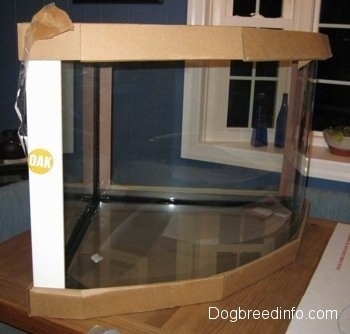
The tank itself is separate from the base and rests on top of the base. There is no need to physically attach it, as when the water is in the tank, it is heavy and will not slip off the base. When transporting your tank be careful not to break the seal. Carry it at the corners, where it is stronger.
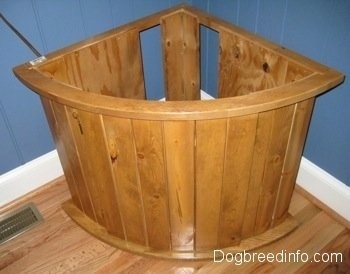
The tank will rest on top of this base.
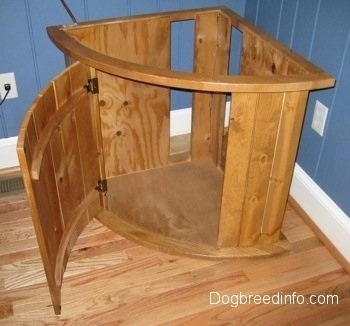
Most tanks have a cabinet underneath to store your fish supplies.
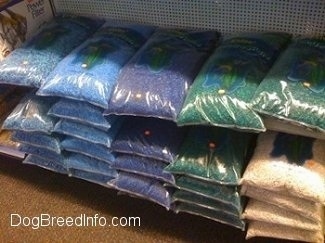
Fish tanks need a gravel, stone or sand base. It is an important part of the tank’s ecosystem. There are lots of different gravels to choose from.
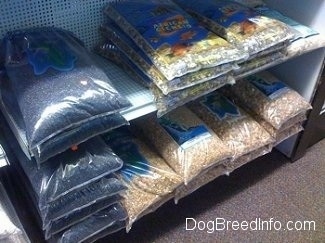
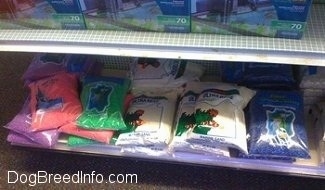
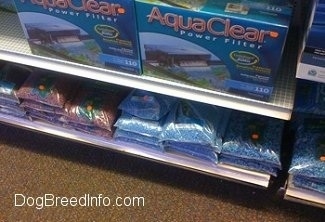
You will also need to choose a filter. A filter runs 24 hours a day cleaning the water.
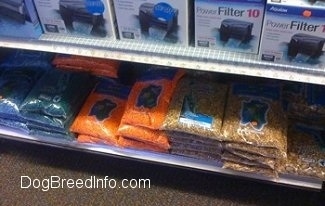
Gravel should be three inches deep, covering the entire bottom of the tank. A rule of thumb is one pound of gravel per gallon of water.
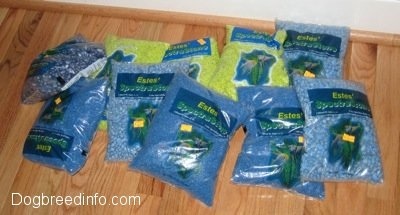
For this particular aquarium, a variety of blues with a touch of yellow have been chosen.
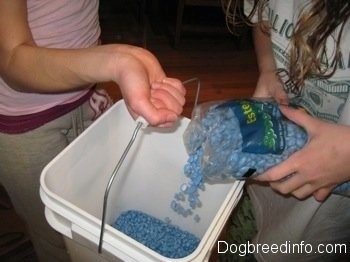
Whether your gravel is new or used, it has to be washed with water before putting it into the tank. Soaps and other cleaners should be avoided. If you do not get all of the soap washed off, it can kill the fish and possibly prevent your natural biofilter from developing.
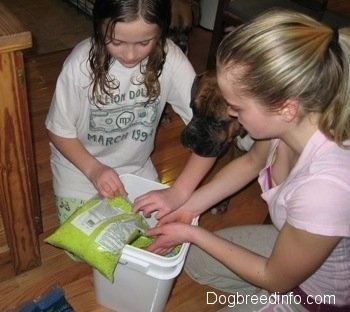
Make sure your hands are clean and avoid letting your dog lick the gravel. You do not want that type of bacteria in your tank.
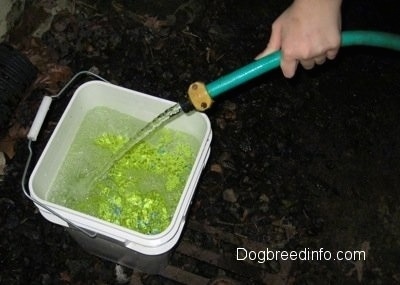
The gravel is washed outside with the garden hose, rather than the inside sink, to avoid little pieces of the stone from going down the drain.
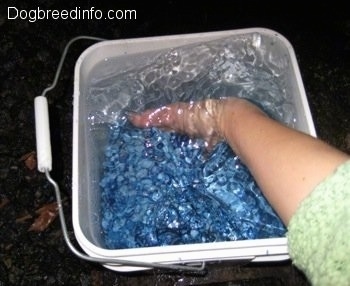
The gravel is mixed around the water by hand. The excess water is dumped. This process is repeated three times per batch of gravel.
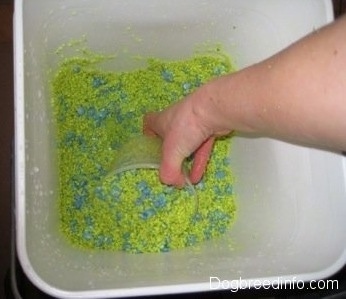
With the excess water dumped, the gravel is carefully scooped from the bucket...
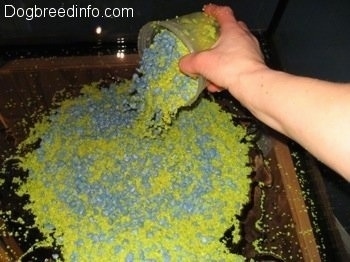
…and dumped into the tank.
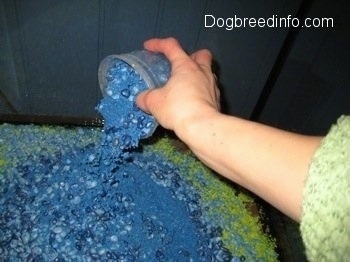
Using a scoop is wise, as you do not want to crack your aquarium glass or break the seal by dumping all of your heavy gravel at once into the empty tank.
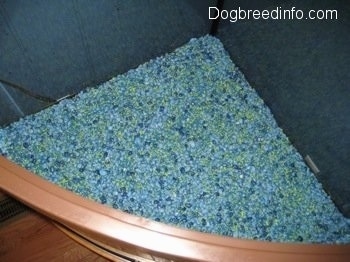
The gravel should cover the entire bottom of the tank, about three inches thick. You can now add your water.
Fish cannot live in water that contains chlorine. If you have public water with chlorine in it, you will need to treat your water before adding it to your tank. There are a couple of ways to get the chlorine out of your tap water: by treating it with a chemical you buy at the pet store, or by letting your water sit out for about four to eight days, or longer, depending on the level of chlorine in your water and the surface area of the container the water is in.
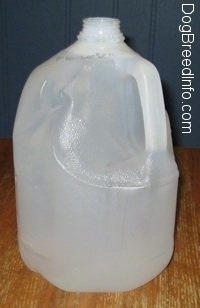
For example, if you fill a gallon jug to the very top, the surface area is tiny and therefore, it will take longer for the chlorine to evaporate.
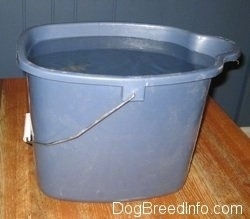
If you store the water in an uncovered bucket, it will happen quicker. Be sure the containers you are using are clean. Do not use a bucket that once had a cleaner in it. The buckets you use for your fish tank should only be used for the fish tank, nothing else. You can buy water tester kits at the pet store to test the water's chlorine level. If you have city water that contains chlorine, it is wise to use one of these chemical testers.
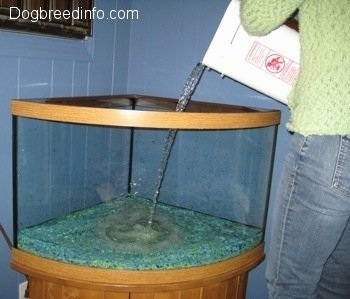
We happen to have well water, so the water is added without the worry of chlorine.
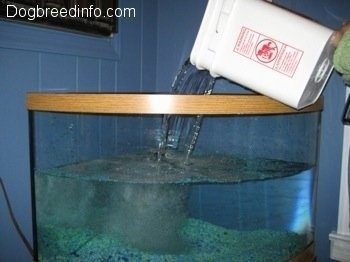
Bucket by bucket...
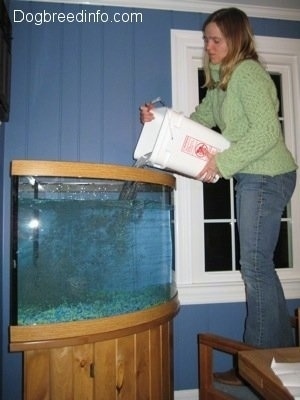
…until the tank is full.
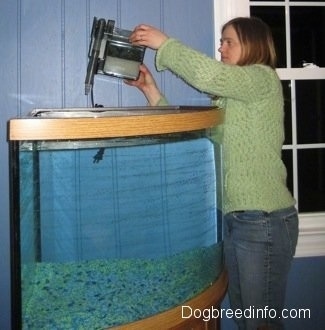
For filter instillation, follow the instructions for your particular model.
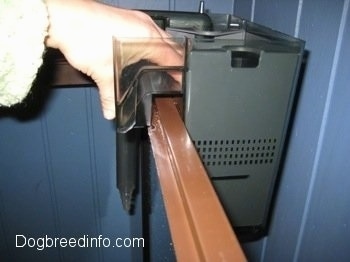
With this particular tank, the filter does not quite fit.
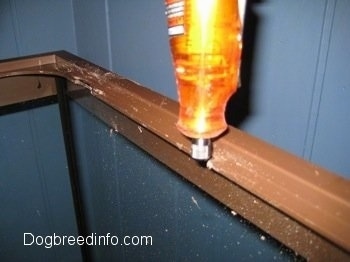
A Dremel is used to file down the spots where the filter will rest.
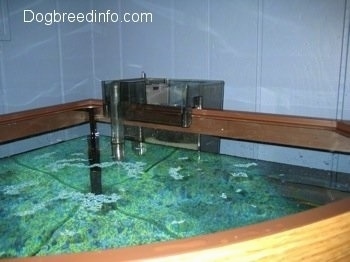
When you first add your gravel, it is normal to have small pieces floating about. These pieces will soon settle to the bottom.
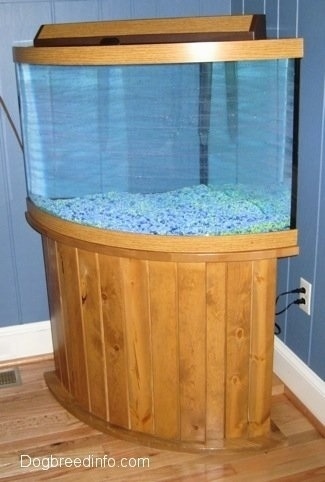
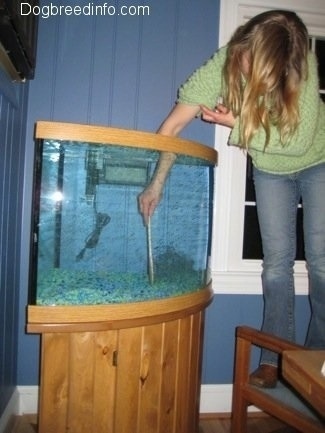
A clean cooking spoon is used to level out the gravel.
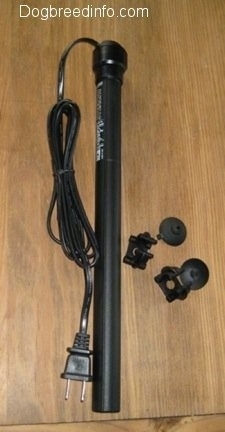
Most types of fish need to have a heater in the tank to keep the water temperature consistent.
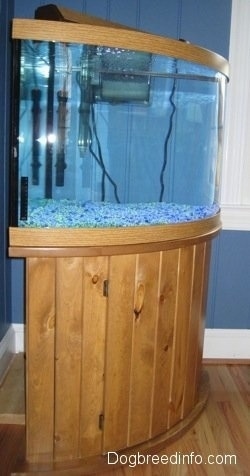
A thermometer is placed on the outside of the tank to monitor the water temperature. Different types of heaters and thermometers are available at your local pet store. This tank has a sticker thermometer attached to the outside of the glass and a fully submersible heater. The heater is placed in the back corner next to the filter. Placing the heater next to the filter should help the water temperature stay even all over the tank.
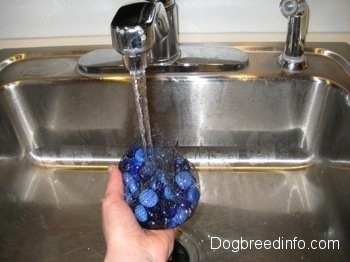
Some fancy stones are added. They must be washed before they are put into the tank.
Tank cycling is allowing the tank to establish a biofilter, a natural filter in the gravel that turns the highly toxic waste a fish produces into less harmful substances. This process of creating this natural phenomenon can take up to two months to reach peak efficiency. Stocking your tank with too many fish before tank cycling has been established is the leading cause of fish tank failures.
Fish give off ammonia (NH3, NH4) from their waste (fecal matter). Ammonia breaks down by nitrifying bacteria into nitrite (NO2), which is then broken is down to nitrate (NO3). If ammonia and/or nitrite build up in your tank, it can and will kill the fish. A well-cycled tank helps keep the tank at safe levels along with regular weekly water changes. During this cycling period, do not do any water changes.
There are a few ways you can help seed your tank and get the cycling process going.
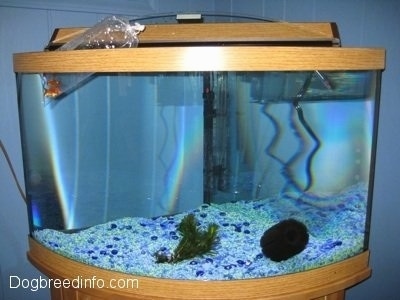
This tank shows an example of a plant, a sponge from another already established fish tank and a few goldfish. These things are not necessary, but do help speed up the biofilter process.
When adding fish to any tank, the fish cannot be dumped right into the tank. They have to slowly adjust to the tank’s water temperature and chemistry. Fish should be floated on top of the tank for about an hour with the bag sealed so the change can be gradual, avoiding shock to the fish.
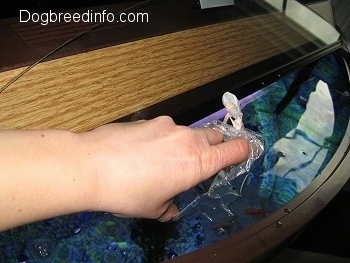
When you think the temperatures are even put a hole in the top of the bag, mixing a little bit of the tank water in with the bagged water.
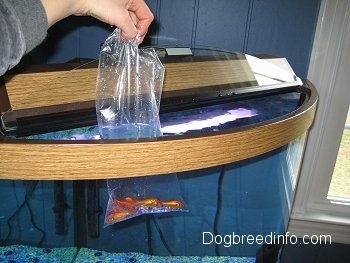
In about ten minutes mix a little more tank water into the bag.
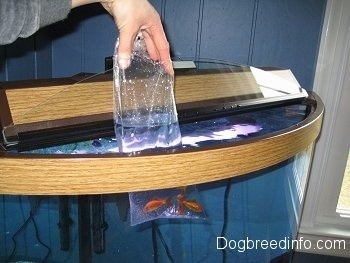
And a little more in about ten more minutes.
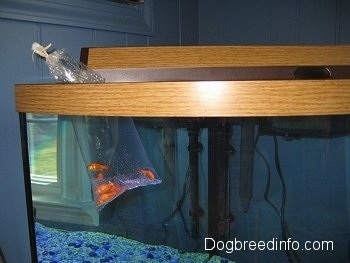
And a little more ten minutes later. Let the fish adjust to the new water.
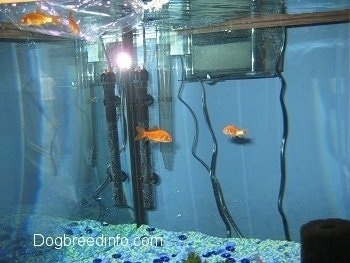
In about 20 more minutes you can set your fish free. If you are adding fish to an already established tank, you may want to avoid the pet store water getting into your tank. If this is the case, net the fish out of your bag or place a net over a container and dump the fish into the net, allowing the pet store water to fall into the container. Then use the net to put only the fish into your tank. In this case, we are welcoming the bacteria from the pet store feeder goldfish to help the biofilter get established.
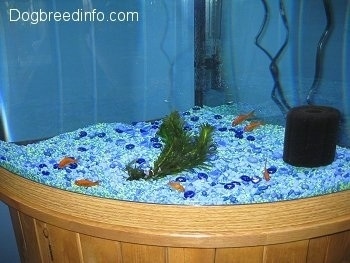
Between the use of the well water, the plant, the sponge and the feeder fish, this tank’s biofilter should get going in less than a month. These feeder fish will be moved to an outside springhouse when their biofilter building services are complete.
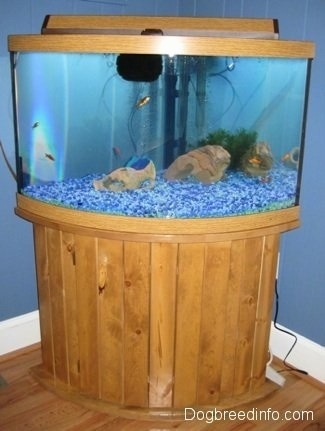
A few days later, some decorative hideaways are added. The sponge from an already established tank is still floating around, the plant has been put into the gravel and all six goldfish are still alive and happy. This tank is well on its way to establishing a good biofilter system.
Besides not allowing a natural biofilter to establish, there are a few more reasons why some aquariums fail to keep their fish alive.
When you overfeed your fish, uneaten food is left in the tank. This uneaten food rots, contaminating the water. You are more likely to kill your fish by overfeeding than by underfeeding. When in doubt, go with less food. You will kill your fish with kindness by overfeeding.
Overcrowding—do not add more fish than the size of your tank can handle. A rough estimate is one inch of fish per gallon of water. Keep in mind that fish are different. Stocking a tank with 15 slender fish is not the same as stocking a tank with 15 rounder, fat fish.
Do not stock your tank with incompatible fish—that is, fish that do not get along. Choose your fish carefully. Not all fish get along and not all fish live in the same environments. Some fish like it warmer and some like it colder. Some need hard water and some soft, some neutral etc...
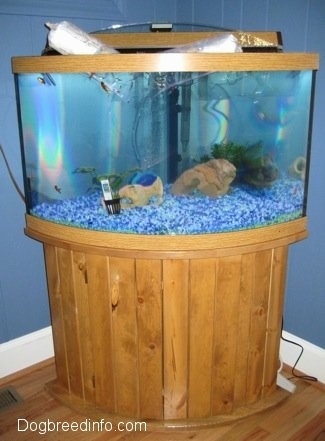
One week later all six feeder fish and the plant are doing well. We take out the sponge and add one more plant (an anubias nana), four Neon Tetras and six X-ray Tetras. Both the Neon and X-ray Tetras are schooling fish, meaning they like to hang out in groups of their own kind. The bags of fish are floated on top of the tank for about 40 minutes to allow the water in the bag to slowly change to the temperature of the tank to avoid shock to the fish.
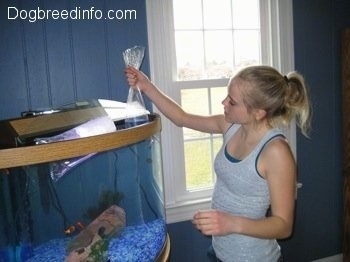
Tank water is added to the bags little by little after the temperature has evened out.
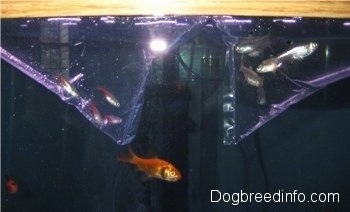
The feeder goldfish are very curious about the new fish.
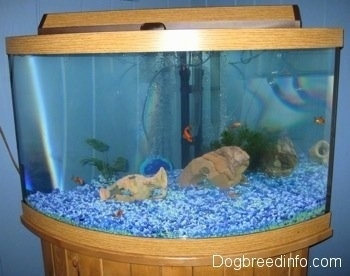
When it's time to release the two new schools of fish, the goldfish chase them a bit, but soon accept them into the tank.
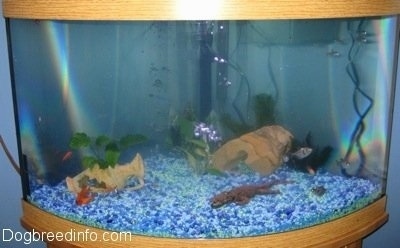
A few days later five Black Widows (also called Black-Skirt Tetra), five more small Neon Tetras, two baby Otocinclus Catfish, five Platies, two plants, one hide-a-way and an alligator air bubbler decoration are added to the tank.